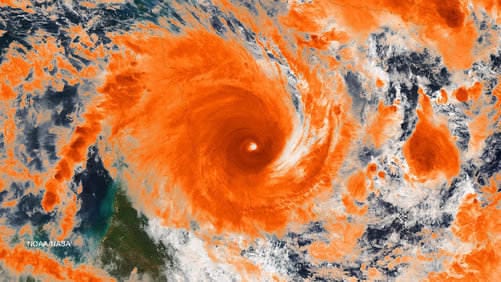

Cyclone Ita.
The International Renewable Energy Agency (IRENA) released its exciting (well…to us) annual update of energy capacity overnight.
Capacity isn’t what’s generated, and because wind and solar are somewhat “overbuilt” to capture fluctuating resources, it can visually overstate renewable energy growth relative to power generation. This isn’t bad – this is just how you logically build a machine that captures sun and wind.
Keeping that in mind, IRENA’s data shows something very important: wind power and solar power are on an absolute global tear, surviving massive global shocks like the global fossil fuelled energy crisis, the pandemic, Trump 1.0, and the constant drumbeat of climate disasters.
Nuclear power is growing, globally, but at a barely visible rate relative to wind and solar.
Part of the federal Coalitions’ messaging around nuclear has been urging Australia to join the global ‘nuclear renaissance’, a trope its advocates have been pushing through selective promoting of announcements and openings.
But the global statistics do not lie: there is no such thing as the “nuclear renaissance.” It’s nicely illustrated in the IEA’s Energy Review, which showed the relative contribution of nuclear to decarbonising new total global energy demand, relative to wind and solar (and this takes into account generation, rather than capacity, so it’s a fairer comparison):
Labor’s budget has not been broadly celebrated by climate, environment or advocacy groups. A mix of muted acknowledgement and angry criticism nicely reflects the Labor party’s muddled blend of actions over its first term.
The Climate Council pointed out something important: Not only is the party failing to fund mitigation sufficiently, it is also failing to put down money to adapt to the unavoidable consequences of the fossil fuels burned so far (and likely to be burned in coming years, even in ‘best case’ scenarios).
CC puts the fossil fuel disaster bill at $13.5 billion, and Tropical Cyclone Alfred specifically at $1.2 billion. “The good news is that measures like investing in access to rooftop solar backed up by batteries – that cut climate pollution – also provide Aussies with cheaper, reliable power for years to come. It’s far less expensive than constantly cleaning up the mess of worsening disasters”, says CEO Amanda McKenzie.
Those are dollar figures that’ll be much worse, if the Coalition gets to delay climate action using the false promise of a nuclear comeback.
NSW-based company unveils its proprietary microemulsion flow battery technology for the first time, promising a…
BNEF says Australia is on the cusp of a big battery boom that could deliver…
Solar households may feel aggrieved about receiving not much for rooftop PV fed into the…
A solar farm and big battery proposed for development north of Geelong has been fast-tracked…
Activist shareholder forces another global energy giant to return money to investors and double down…
Peter Dutton says he will lower the cost of gas. But will that translate into…